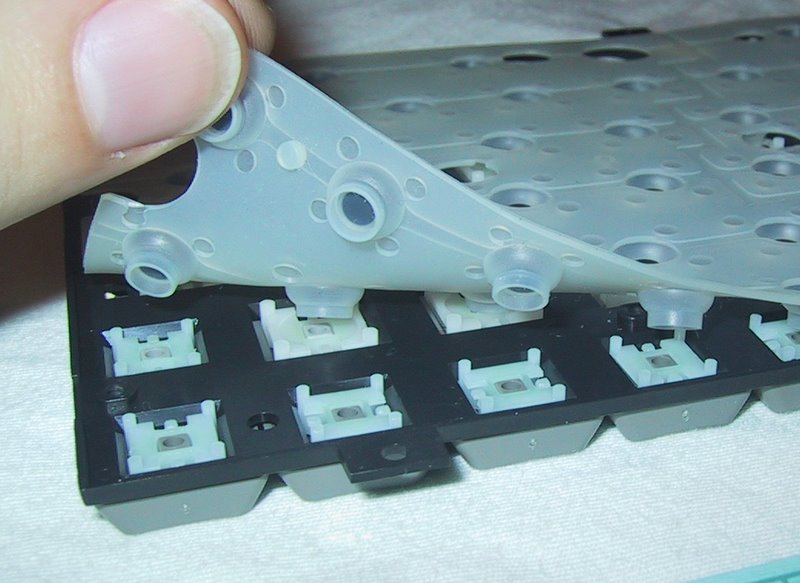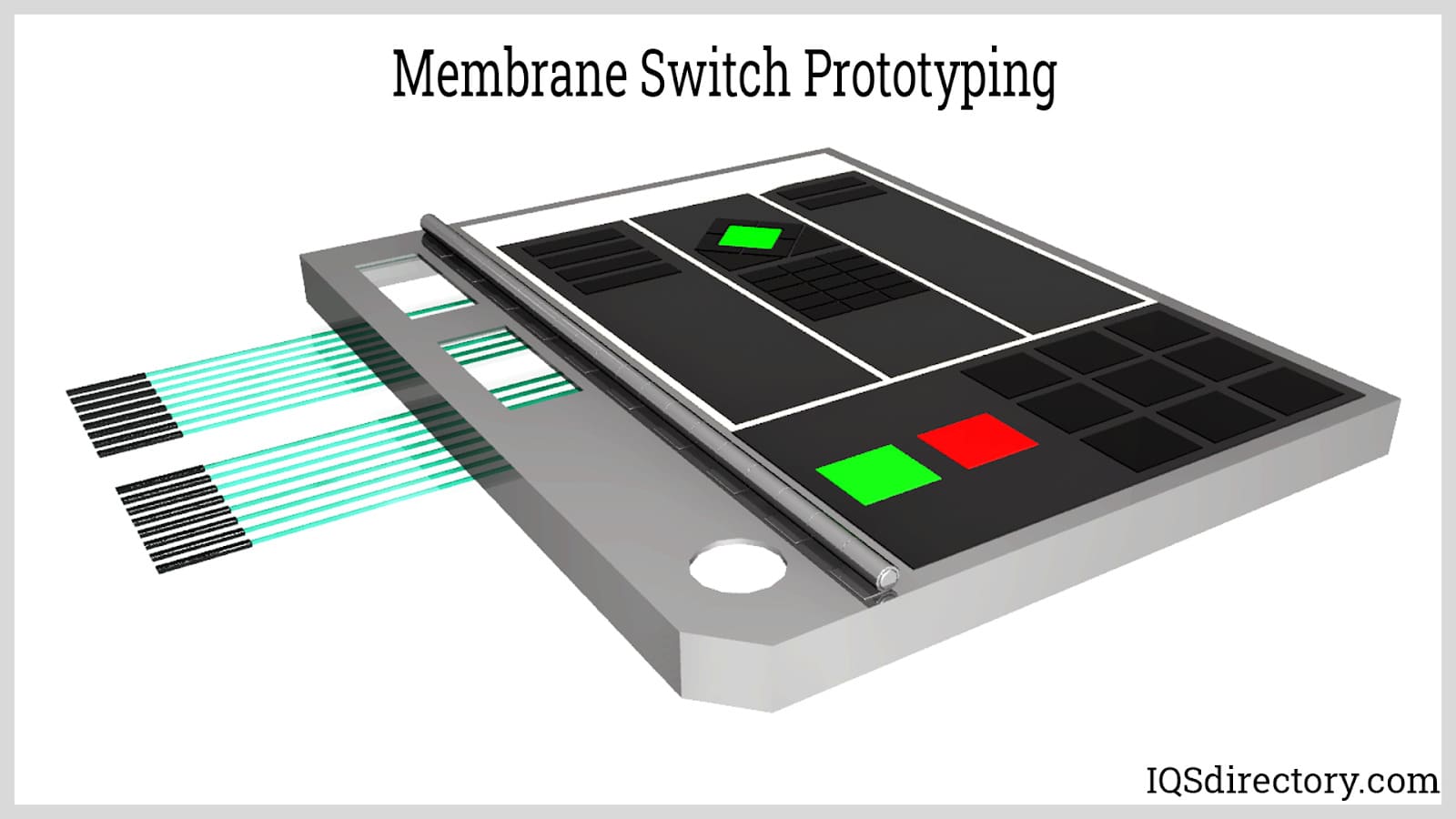Everything About Membrane Layer Change: Understanding Its Layout and Functionality
When you consider the control user interfaces in modern devices, membrane layer buttons commonly enter your mind. These elements are more than simply buttons; they blend layout and performance flawlessly. Understanding just how they work and what makes them effective can transform your point of view on day-to-day electronic devices. There are subtleties to their design and efficiency that you might not be mindful of. Let's explore what sets membrane changes aside from other control systems.
What Are Membrane Switches?

Their smooth nature makes them very easy to clean and resistant to dirt and wetness, a vital attribute in many atmospheres. Membrane layer switches can also be personalized regarding form, dimension, and graphics, enabling producers to create special interfaces customized to specific items. And also, they're lightweight and slim, which aids in minimizing the general mass of tools. In general, membrane layer buttons play a considerable duty in boosting user experience throughout a broad range of applications.
Exactly How Membrane Changes Job
When you push a secret on a membrane button, it triggers an uncomplicated yet efficient device. The top layer, typically made of versatile product, lowers onto a conductive layer below it. This action bridges the void between conductive traces, finishing an electrical circuit. As quickly as the circuit closes, it sends a signal to the device's controller, which analyzes your input.
You'll see that the responsive responses varies based upon the button style, offering either a soft click or a more pronounced action. When you release the key, the membrane layer go back to its original position, resuming the circuit and stopping the signal. This process takes place virtually instantaneously, ensuring a receptive customer experience.
Membrane switches are preferred as a result of their resilience and resistance to dirt and dampness, making them ideal for various applications, from household home appliances to clinical tools. Recognizing this procedure helps you appreciate their extensive usage.
Trick Parts of Membrane Switches
Comprehending the vital elements of membrane switches is fundamental for realizing their functionality and design. The protective layer guards versus ecological variables and wear, prolonging the switch's life-span. By comprehending these elements, you'll gain insight right into exactly how membrane changes run and their significance in various applications.
Materials Used in Membrane Switch Layout
The performance and sturdiness of membrane changes heavily depend upon the products made use of in their design. You usually come across polyester and polycarbonate as key substrates as a result of their outstanding toughness and versatility. These products withstand scrapes and chemicals, making them suitable for requiring environments.
The conductive layers frequently use silver or carbon, chosen for their reliability and conductivity. membrane switch manufacturer. Silver provides remarkable performance, while carbon is a cost-effective alternative. For the overlay, you may take into consideration a matte or shiny surface, depending on your aesthetic requirements and customer experience
Make specific to select adhesives that hold up against ecological variables like temperature level and humidity. Choosing the appropriate materials will ensure your membrane layer button stands the examination of time.
Design Considerations for Membrane Buttons
While making membrane layer switches, it's crucial to take into consideration numerous factors that affect their performance and customer experience. Beginning by concentrating on the format and switch dimension; make sure they're instinctive and very easy to navigate. Take into consideration the responsive responses useful content you intend to click for info provide-- will customers need a visible click or a softer touch? Furthermore, consider the materials you'll use, as they'll influence resilience and aesthetic appeals.
Don't forget the graphic layout; clear labeling and color contrast are substantial for presence. Validate your layout accommodates environmental variables, like wetness or temperature level variations, which could affect performance. Remember the significance of testing prototypes with real customers to gather comments and make needed modifications. This repetitive process assists you fine-tune the style, validating it fulfills both functional and aesthetic demands efficiently. By thoroughly taking into consideration these aspects, you'll develop a membrane layer button that improves functionality and complete satisfaction.
Applications of Membrane Layer Switches
Membrane layer buttons are flexible parts located in numerous applications, from commercial devices to customer electronic devices. You'll see their impact in machines that call for sturdy interfaces and in gadgets that profit from streamlined styles. Comprehending these applications aids you value the performance and functionality of membrane layer switches in everyday modern technology.
Industrial Devices Usage
When you're looking to enhance the performance of commercial tools, membrane layer buttons offer a trusted option that incorporates sturdiness with straightforward design. These switches are excellent for rough environments, offering resistance to dust, dampness, and chemicals. Embrace membrane switches to streamline your procedures and enhance general performance.
Consumer Electronics Combination
In the domain of customer electronics, membrane switches play a crucial role in enhancing individual communication and gadget performance. You'll discover them in tools like microwaves, push-button controls, and video gaming consoles, giving a smooth means to connect with innovation. Their streamlined style enables very easy assimilation right into various items, making controls user-friendly and easy to use. With their capability to incorporate graphics and backlighting, you can appreciate a contemporary aesthetic that enhances the device's overall look. Membrane switches likewise guarantee longevity and resistance to dust and moisture, expanding the lifespan of your electronic devices. By picking membrane buttons, you improve not simply the functionality but additionally the design of your gadgets, making everyday interactions smooth and satisfying.
Benefits and Drawbacks of Membrane Layer Buttons
While membrane layer buttons use a variety of advantages, they likewise come with some disadvantages that you need to take into consideration. One significant advantage is their portable design, making them optimal for space-constrained applications.

However, there are downsides. Membrane layer switches can have a shorter lifespan contrasted to mechanical switches, particularly under heavy usage. They can likewise be much less responsive, which might influence customer responses during operation. If harmed, fixing them can be difficult and commonly requires total replacement. Ultimately, their level of sensitivity to extreme temperature levels and environmental conditions might restrict their effectiveness in certain setups. Stabilizing these benefits and drawbacks will aid you figure out if membrane switches are the ideal suitable for your task.
Often Asked Concerns
How Much Time Do Membrane Layer Switches Commonly Last?
Membrane layer switches over usually last in between 5 to ten years, relying on usage and ecological problems. You'll want to evaluate variables like wear, direct exposure to moisture, and temperature level variations to evaluate their long life effectively.
Can Membrane Layer Switches Be Custom-made for Details Styles?
Yes, you can customize membrane switches to fit details layouts (membrane switch manufacturer). You'll have the freedom to select shades, forms, and designs that match your job's demands, ensuring they blend seamlessly with your total aesthetic
What Is the Expense Variety for Membrane Change Manufacturing?
The cost variety for membrane button manufacturing commonly falls between $1 and $10 each, depending on elements like layout intricacy, amount, and materials. You can resource obtain quotes from manufacturers to discover the very best alternative.

Are Membrane Changes Water-proof or Immune?
Membrane buttons can be created to be water resistant or resistant, depending upon products made use of and construction techniques. If you require them for damp settings, guarantee you specify those requirements during the style process.
How Do Membrane Layer Switches Over Contrast to Typical Buttons?
Membrane layer switches are generally thinner and a lot more flexible than typical switches, supplying a smooth design. They're often less complicated to cleanse and incorporate, yet could not provide the responsive responses you're made use of to with mechanical alternatives.
Verdict
